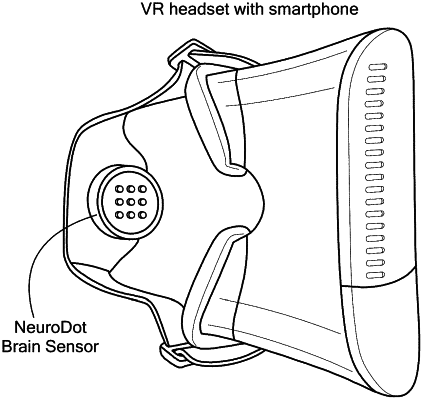| CPC A61B 5/291 (2021.01) [A61B 5/378 (2021.01); A61B 5/4082 (2013.01); A61B 5/4088 (2013.01); A61B 5/6803 (2013.01); A61B 3/10 (2013.01); A61B 5/162 (2013.01); A61B 5/6831 (2013.01); A61B 5/7264 (2013.01); A61B 5/742 (2013.01); A61B 2562/0209 (2013.01); A61B 2562/14 (2013.01)] | 21 Claims |

|
1. A brain sensing theranostic headset device comprising:
a sensor unit comprising an array of electrodes configured for providing electrical contact between the electrodes and the scalp of a subject wearing the device, wherein the electrodes are configured for recording brain signals in an electric field encephalography (EFEG) mode;
a headband upon which the sensor unit is mounted, the headband wearable on the subject's head and adapted for positioning the sensor unit adjacent to a selected brain region;
a display unit comprising a display capable of displaying visual stimuli to one or both eyes of the subject; and
an event triggering system comprising:
a digital event trigger configured to generate an optical signal in a selected region of the display signaling a beginning and/or a type of a visual stimulus; and
an optical sensor covering said selected region of the display and configured to receive the optical signal generated by the digital event trigger;
wherein the device is capable of measuring signals from the brain of the subject in response to the visual stimuli, wherein the signals include transient and/or steady state visual evoked potentials and fields (VEPF).
|